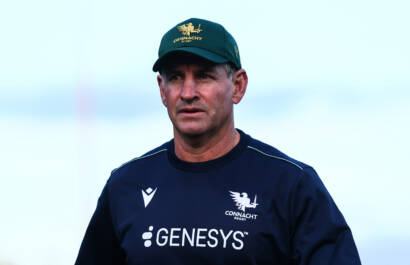Social Stories

A social story is a short, simple narrative designed to explain social situations, expectations, and appropriate behaviours in a clear, step-by-step format. These stories are especially useful for individuals who are neurodiverse, such as those with autism or ADHD, as they help break down potentially overwhelming or confusing social interactions or new environments.
Benefits of a Social Story
- Social stories help people anticipate what will happen in a particular situation, which reduces uncertainty and stress. For example, when attending a large venue like the Aviva Stadium, knowing what to expect at security checkpoints, seating areas, or interacting with staff can help ease anxiety.
- Neurodiverse individuals may struggle with understanding social cues or the unwritten rules of certain interactions. Social stories can guide someone on how to behave in specific environments, such as when visiting their local rugby club, understanding game-day routines, or even cheering from the stands at the stadium.
- By preparing individuals for new experiences or interactions, social stories build confidence. For instance, a story can explain how to welcome new players into a team, offering specific examples of greetings, teamwork, and inclusive behaviour, helping neurodiverse individuals feel more comfortable when socialising.
- Repeated exposure to social stories can improve the individual’s ability to navigate various social situations. Whether it’s interacting with teammates or talking to staff at a stadium, these skills are developed gradually over time, making the person feel more comfortable and integrated in these environments.
Why Social Stories Are Unique for Neurodiverse Individuals
- Many neurodiverse individuals benefit from concrete, visual, or structured learning methods. Social stories often use images and simple, literal language, which aligns with how they learn best. For instance, a social story explaining how to attend a rugby match at the Aviva Stadium or how to navigate the clubhouse at their local rugby club can break down every step of the process into manageable, easy-to-understand actions.
- Social stories can be personalized to reflect an individual’s specific needs, preferences, and experiences. This could include details like where to park, what to do when arriving at the stadium, or how to handle loud noises during a game. Similarly, for welcoming new players to a team, the story might focus on breaking down the steps of meeting the coach, participating in warm-up exercises, or playing a match.
- Neurodiverse individuals may find unpredictability or changes in routine challenging. Social stories provide a clear sequence of events, making the experience of attending a rugby game or joining a team more predictable and easier to navigate. For example, a story about arriving at a local rugby club for training might outline the steps from getting dressed at home, arriving at the field, meeting teammates, and starting practice.
Importance of it Being Unique to Them
Each neurodiverse individual has different triggers, strengths, and challenges, so social stories should be personalised to address these specific areas. This makes the social story more relatable, meaningful, and impactful, ensuring that the person feels supported in a way that respects their differences.
Below are examples of social stories you can adapt for someone attending a rugby match at the Aviva Stadium, going to their local rugby club for the first time, or welcoming new players into a team. Additionally, there is an example personalised social story from player at Galway Corinthians.
Story Examples
Social Story for a Player at Galway Corinthians
Social Story for Going to Aviva Stadium
Social Story for Welcoming New Players to Our Rugby Team
Social Story Joining a New Rugby Club and Meeting New Friends




